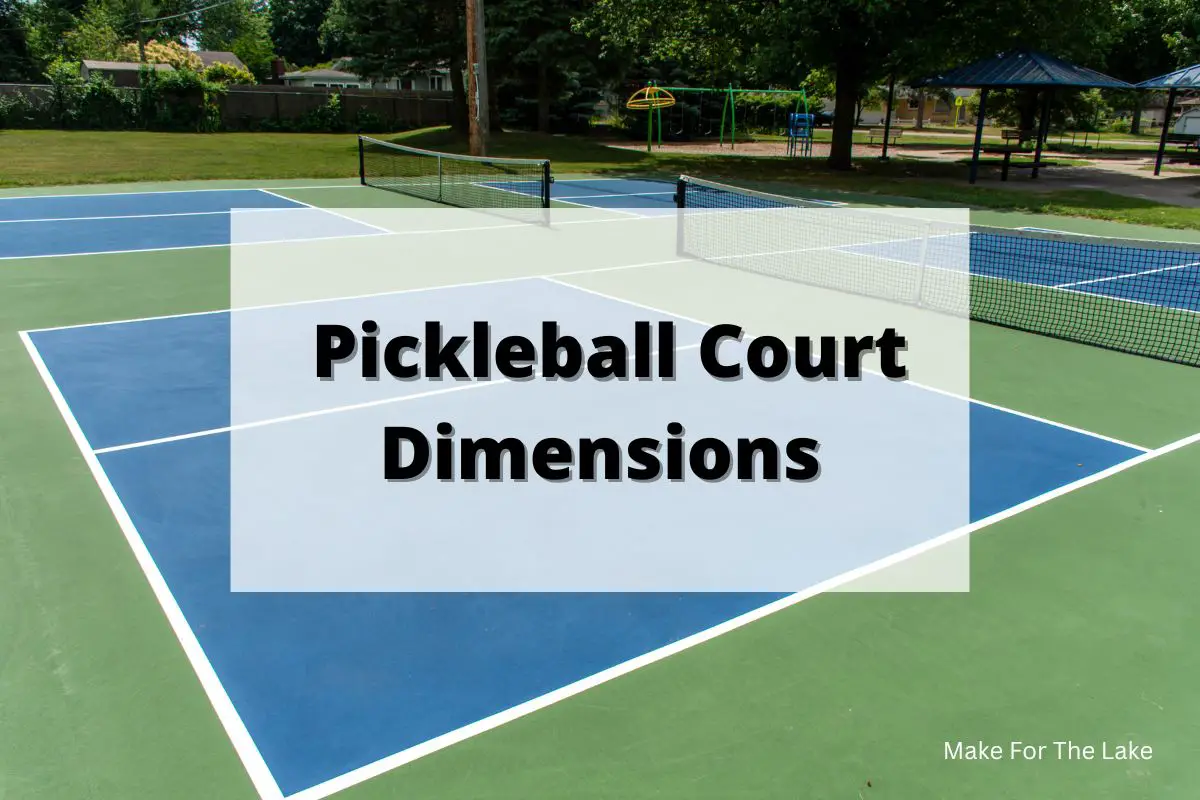Disclosure: This post contains affiliate links, meaning that we earn a commission if you purchase a product or service through our exclusive links at no cost to you. For more details, please read our full disclosure.
Understanding the dimensions of a pickleball court is essential for players and enthusiasts to enjoy the game to its fullest potential. In this blog post, we will delve into the specific measurements of a standard pickleball court and explore how they differ from the dimensions of other popular court sports such as padel ball, tennis, squash, and racketball. By grasping these differences, you’ll gain a deeper appreciation for the unique characteristics of pickleball and its court structure.
Pickleball Court Dimensions
A standard pickleball court measures 20 feet wide by 44 feet long (6.1 meters by 13.4 meters) for doubles play. For singles play, the court width remains the same, but the length is reduced to 20 feet by 22 feet (6.1 meters by 6.7 meters).
The court is divided into specific areas, including the non-volley zone (also known as the kitchen), service courts, and the baseline. The net is positioned at the center of the court, extending 34 inches (86.4 cm) in height at the posts and 36 inches (91.4 cm) at the center.
Pickleball Court vs. Tennis Court
A notable difference between the dimensions of a pickleball court and a tennis court lies in their size. A standard tennis court measures 78 feet long and 27 feet wide for singles play, while a pickleball court is only 44 feet long and 20 feet wide for doubles play.
The smaller size of a pickleball court offers several advantages when compared to tennis.
Firstly, the reduced court size allows players to cover the court more efficiently, resulting in shorter distances to run and less physical strain. This makes pickleball more accessible to players of all ages and fitness levels.
Second, the smaller court fosters quicker exchanges and rallies, ensuring dynamic and engaging gameplay. The lower net height in pickleball also enables players to execute a wider variety of shots and strategies, including close net play and precise drop shots.
Overall, pickleball’s smaller court dimensions promote a fast-paced, exciting game that is both challenging and enjoyable for players.
Court Dimensions for Other Court Sports
Padel Ball Court Dimensions
Padel ball is another racquet sport that shares similarities with tennis and squash. The dimensions of a padel ball court are significantly smaller than those of pickleball. Padel courts measure 29.5 feet wide by 59 feet long (9 meters by 18 meters).
Padel ball courts feature glass walls, and a net divides them into two halves, similar to a tennis court. Padel courts have a lower net height compared to tennis courts, allowing for rebound shots off the walls.
Tennis Court Dimensions
Tennis courts have different dimensions for singles and doubles play. For singles, the court measures 27 feet wide by 78 feet long (8.23 meters by 23.77 meters), while doubles courts are slightly wider at 36 feet wide by 78 feet long (10.97 meters by 23.77 meters). The net height in tennis is 3 feet (0.914 meters) at the center and slightly lower at the posts. Unlike pickleball, tennis courts have baselines but no non-volley zones.
Squash Court Dimensions
Squash courts are much smaller than pickleball and tennis courts due to the nature of the sport. A standard squash court measures 21 feet wide by 32 feet long (6.40 meters by 9.75 meters). The front wall features a tin at the bottom, which the ball must hit above during gameplay. The court also has a service box and out-of-bounds lines to determine fair play.
Racketball Court Dimensions
Racketball, also known as racquetball, is played on a court that resembles a squash court. However, racketball courts are slightly larger, measuring 20 feet wide by 40 feet long (6.10 meters by 12.19 meters). The front wall does not have a tin, and the court includes service boxes and out-of-bounds lines. Racketball shares similarities with squash but features specific rules and gameplay unique to the sport.
Final Thoughts
Understanding the dimensions of a pickleball court is crucial for players to adapt their gameplay and strategy effectively. Compared to other court sports like padel ball, tennis, squash, and racketball, pickleball courts have specific measurements tailored to the nature of the game. Whether you’re playing doubles or singles, the dimensions of a pickleball court create an environment that emphasizes quick reflexes, precise shot placement, and strategic play. By familiarizing yourself with these dimensions and comparing them to other sports, you’ll


